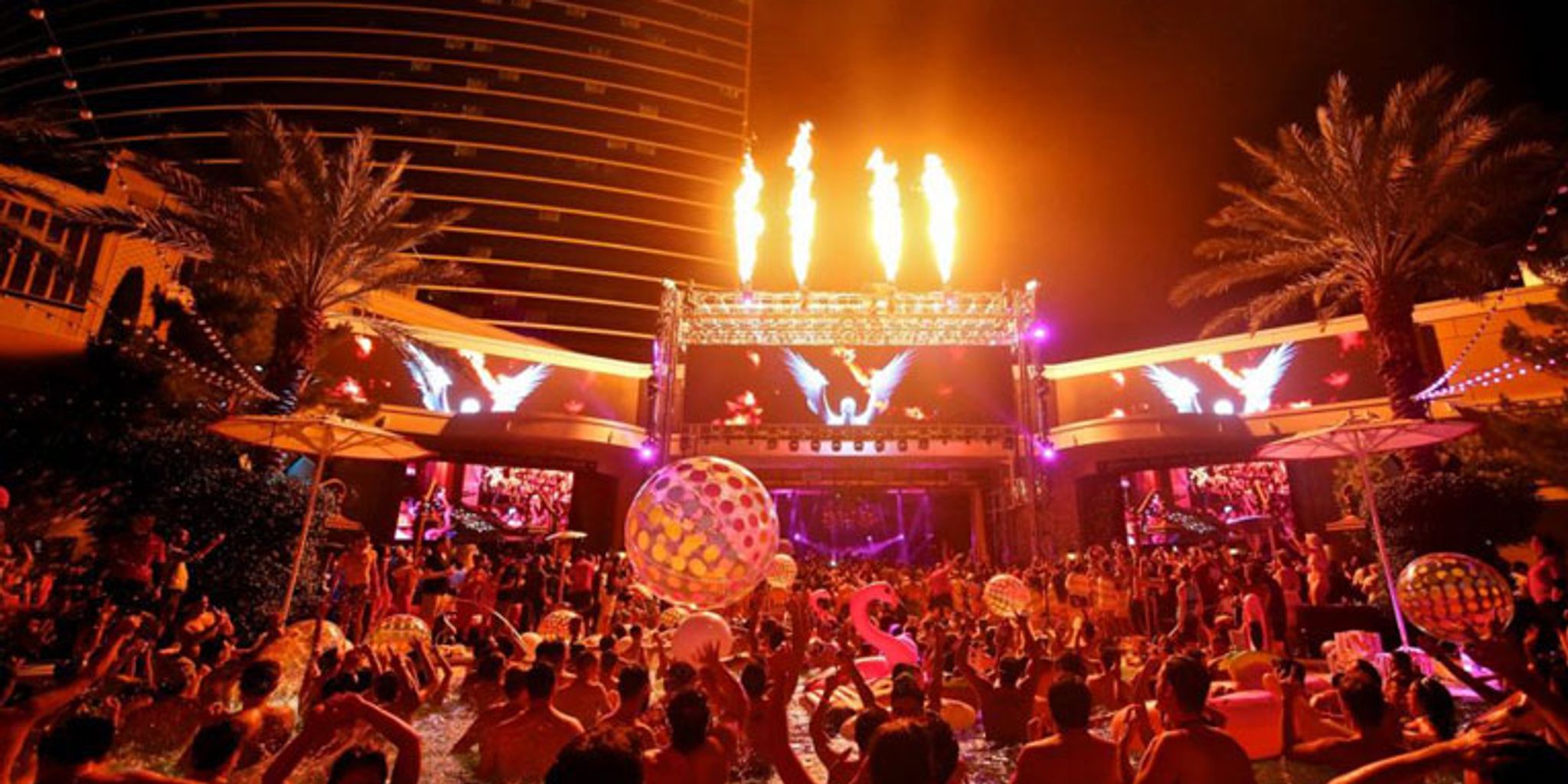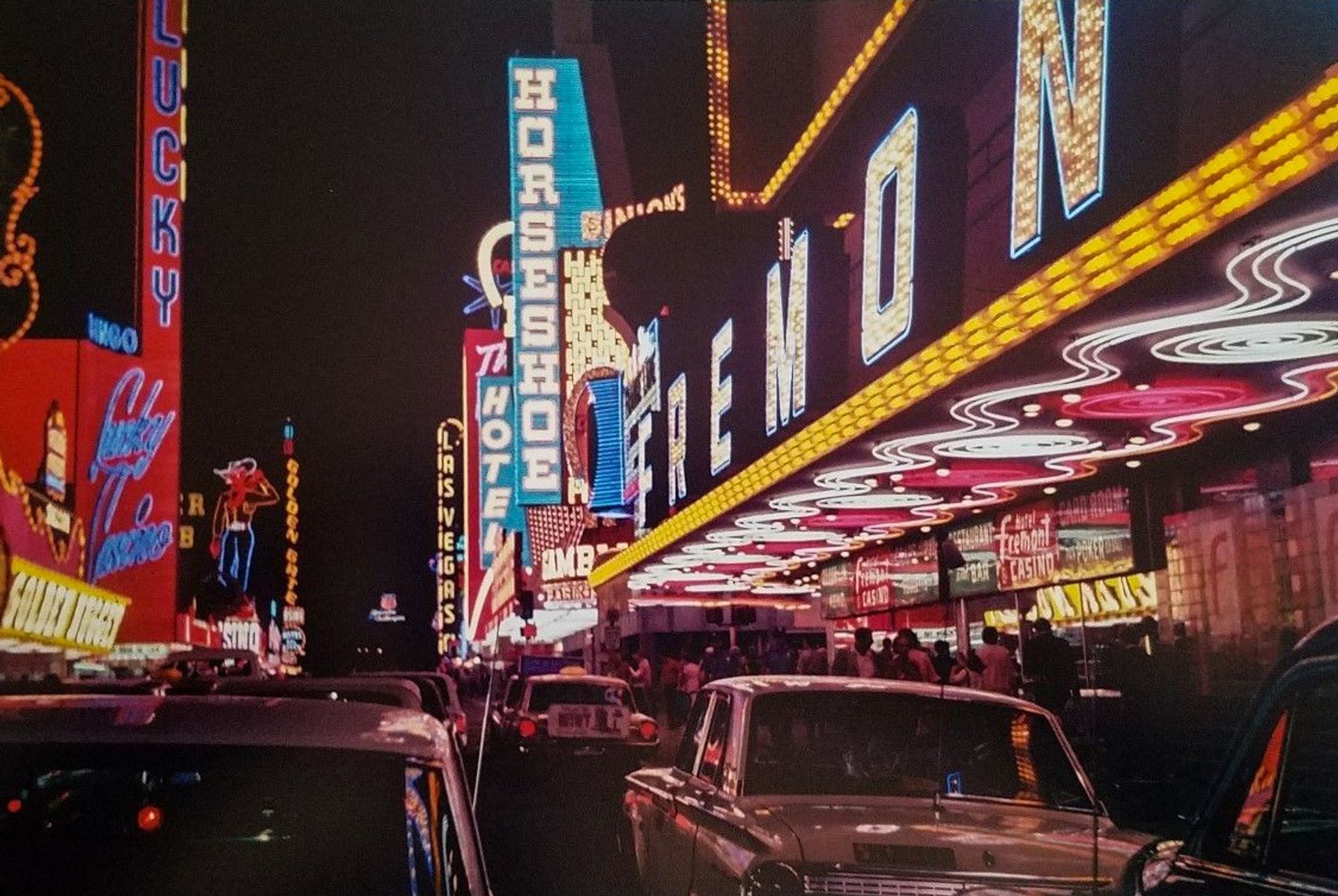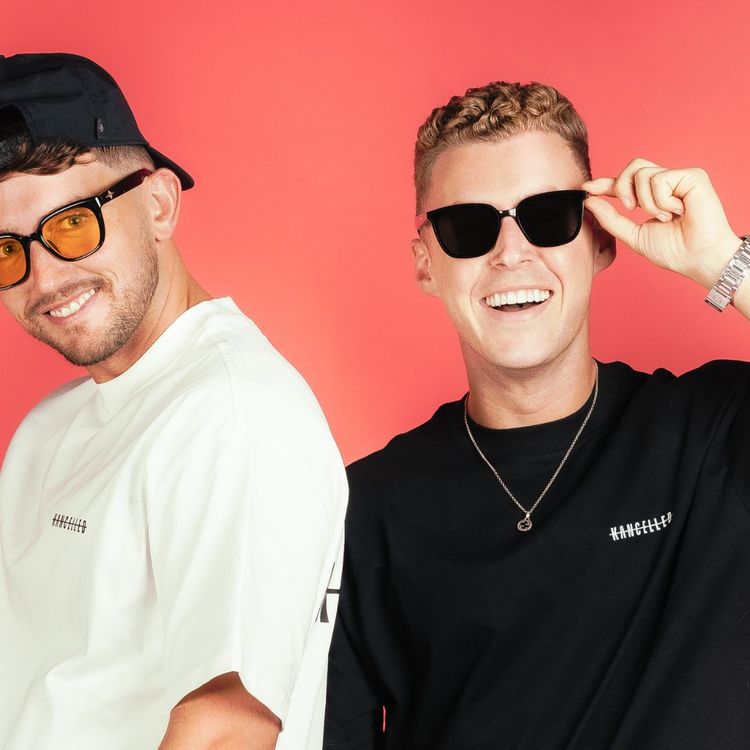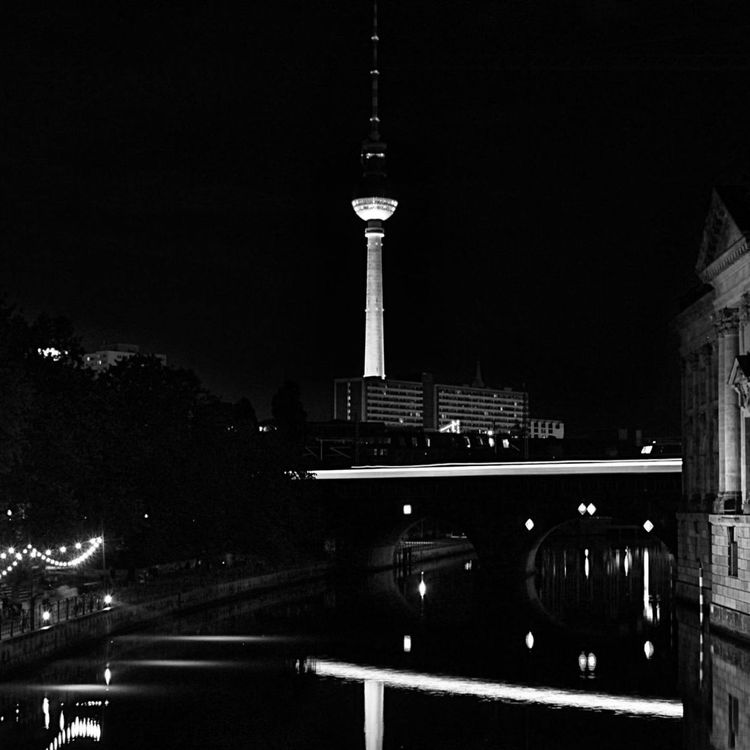From Liberace to Calvin Harris: The Evolution of Club Culture in Las Vegas:
Las Vegas is synonymous with bright lights, partying, gambling, and all-around excess. Its first casino opened in 1931 after Nevada legalized gambling, although prohibition continued until 1933. In 1938, California began cracking down on gambling, pushing the industry to Vegas.
The Vegas we know as a destination for entertainment and late-night revelry was born in large part due to Frank Sinatra and the Rat Pack performing regularly in the ’50s and ’60s at the Sands Hotel and Casino—the seventh hotel to open on the Strip in December 1952.
A Crooner’s Paradise
“Frank wouldn’t go out after dark without a sport jacket on, let alone perform out of a tuxedo,” former Nevada Governor Lorraine Hunt-Bono told the Smithsonian magazine in 2013. “He was the spark that changed Vegas from a dusty Western town into something glamorous.”
Sinatra, Dean Martin, Sammy Davis Jr., actor Peter Lawford, and comedian Joey Bishop, a.k.a. the Rat Pack, held one of the first Vegas residencies, performing regularly in front of large audiences at the Copa Room and the Sands. Just a few years into the Pack’s glamourous partying, in 1954, around eight million tourists a year visited The Strip to see their shows, along with other big stars of the time, including Debbie Reynolds, Liberace, Elvis Presley, and Ronald Regan(!).
Glitzy pianist Liberace held the first Vegas residency, making waves with his lively show tunes at the Hotel Last Frontier from his first show there in 1944. He would go on to rock the Strip for decades, his entire career, at one point holding the title of highest-paid entertainer in the world.
As more hotels opened on the Strip, they wanted stars to advertise on their marquees to bring people in. The original Ocean’s 11 film, starring the Rat Pack, came out in 1960, further popularizing the stars and its Vegas setting as a glamorous, luxurious destination.
A Stage For A Dying Career
By the late-’60s, the British Invasion was in full force, the hippy counterculture movement was rising, and the widespread popularity of Vegas and crooner music waned. Thus, the Vegas audience aged instead of the city bringing in younger, hipper revelers and the artists they wanted to see. In the late-’70s and ’80s, holding a Vegas residency was seen as the last attempt to save a dying career.
Sin City’s sparkle was dimmed in the early-’80s by the recession, Atlantic City legalizing gambling and opening up mega-casinos, and big rock bands opting for massive sports arenas as their preferred venues.
The city was trying to clean up its reputation for seediness and drugs to appeal to the white-washed family values of the Regan era, so hotels built out family-friendly attractions instead of focusing on drawing guests in with the musical razzle-dazzle of years past. Sinatra referred to ’80s Vegas as “an amusement park…in my era, Las Vegas was rock solid, and now it’s papier-mâché.”
Welcome To The Millennium Of Pop
The new century turned a gilded leaf for the Neon Capital of the World. In 1998, several new, big developments opened, including the Bellagio. Barbra Streisand’s Y2K New Year’s Eve concert at the MGM Grand became the highest-grossing concert ever at the time. Vegas was the world’s most popular city to visit, seeing 37 million tourists annually.
Céline Dion breathed life back into Vegas residencies with A New Day, held at the height of her career from 2003-2007. As of 2018, A New Day still held the title of highest-grossing Vegas residency of all time, bringing in $385.1 million! More residencies from pop and rock stars followed suit, as hotels once again wanted to put a big name on their marquee lights to bring in the big bucks.

Club 3121
Prince briefly painted Sin City purple from 2006-2007 with arguably the coolest club it’s ever seen, 3121, where he’d play for hours and bring star-studded friends onstage with him.
Britney Spears continued the legacy of the successful pop star residency from 2013-17, bringing in younger fans to the city to experience its glitter.
“What followed Britney was going out and getting younger artists and a wider span of genres that would mirror the changing demographic of Las Vegas,” Kurt Melien, president of Live Nation Las Vegas, told Las Vegas Weekly in 2016. “Now we’ve got everything from Pitbull to Brooks & Dunn. The demographic is more diverse than ever.”
The Desert Rave Begins
And as pop stars revived Vegas’ shimmer and appeal in the ’00s and ’10s, so did DJs. Even before Y2K hit, it was already emerging as a rave destination.
“Vegas is the new Ibiza,” Paul Oakenfold famously told Visit Las Vegas in 2008. “It has become an adult playground.”
The seeds were planted with the Desert Move party an hour outside the city in 1996, featuring Josh Wink, Derrick May, Dmitry from Deee-Lite, and more, with dance music heads gathering together in the desert air, including Insomniac founder Pasquale Rotella and OG local Vegas DJ Robert Oleysyck.
Later that year, the desert rave inspired Gino LoPinto and Aaron Britt to open Utopia, Sin City’s first electronic music-centric nightclub. Utopia was a stand-alone club, unlike today’s Vegas clubs attached to hotels, and served up “indoor pyrotechnics, a high-wattage sound system and an ‘anything goes’ mentality,” and an inclusive club kid vibe with no bottle service. Oleysyck was a resident DJ at Utopia, hosting Paul Oakenfold’s and Sasha’s first Vegas sets. John Digweed, Goldie, and other legendary dance acts also helmed the decks there. The rave was strong at Utopia until 2001 when it shuttered its doors.
“In any nightlife discussion, you can’t deny the impact Utopia had,” Oleysyck said. “It was a jewel in the nightlife scene. Not just in Vegas, but in America. People were flying from every coast to come on Saturday night. You can’t deny that they were influenced by that one way or another.”

AWOL Producitons, Freaknight
A Way Of Life Productions (AWOL) was one of the event producers who put on parties at Utopia, as well as in warehouses and other pop-up spaces, creating elaborate scenes to play and dance the night away. In classic rave style, their fliers would typically have a hotline number to call the night of the event to find out the location.
Vegas DJ John Torres created another dance music haven in 1997 with the Liquid303 record store, selling only dance music, along with presale tickets to the hottest raves nearby. “The timing was perfect,” Torres said. “Utopia was in full swing, Chad from AWOL was throwing legit warehouse parties, after hours were starting to pop up. The scene was growing quickly, but it was still considered ‘underground’ back then.”
Let’s Go, Mega-Club Hopping!
In the early ’00s, hotel owners saw the money they could make tapping into the burgeoning dance music scene and began booking big-name DJs at their clubs. The now-shuttered clubs Ra at Luxor, C2K at Venetian, and Baby’s at Hard Rock were some of the first venues to regularly book DJs, although they didn’t exclusively cater to the dance music crowd. AWOL stayed active, bringing the rave vibes to these spaces that were still newer to it. Filling the void of Utopia, Ice, another off-Strip, stand-alone club, brought in the likes of Paul Oakenfold, DJ Dan, Tiësto, and Armin Van Buuren.
Things shifted when Paul Oakenfold became the first big-name Vegas resident DJ with his Perfecto parties at Rain at Palms in 2008. He served up a wide array of sounds, including unreleased tracks, with the glamorous backdrop of a big-budget production complete with aerialists, stilt-walkers, lasers, and confetti. This was a place to be seen. It was so successful that his residency was extended beyond the initial year and replicated by other hotel clubs.

Paul Oakenfold LOVE FESTIVAL 2009 Club Rain
Using Perfecto’s extravagant and successful blueprint, dozens of EDM-focused mega-clubs opened at hotels on the Strip, including XS in 2008, Marquee in 2010, Hakkasan in 2013, OMNIA in 2015, and Jewel in 2016. TAO was the first club to host DJ-helmed pool parties, now a standard part of the Vegas rave experience, with poolside parties at Encore, Wet Republic, Drai’s Beachclub, and more, booking big-name DJs to bring the party into the sunshine.
EDM & EDC Keep Vegas Raving
In 2011, Insomniac held its flagship festival, EDC, in Las Vegas for the first time, relocating from its home city of Los Angeles. The timing was perfect for solidifying Sin City as a destination for EDM lovers. The emergence of the mega-clubs and poolside venues offered the ideal setting for EDC day parties and after-parties.
Get Tickets to Elrow Las Vegas May 19, 2022The surrounding events of EDC Week have become a destination in itself when the city is consumed by raving and the world’s highest-paid DJs—and Vegas residency regulars—like Calvin Harris, Steve Aoki, David Guetta, Kaskade, Diplo, and even lauded event brands like elrow draw in ravers from around the world willing to pay the high ticket prices.
EDC is estimated to have brought in $1.3 billion to the city during its first five years there! The 2019 fest brought in 450000 ravers from over 100 countries, with over 2000 hotel rooms booked for the staggering 3000 EDC staff members that made the magic happen.
The rave is sure to go on in Vegas for quite some time.

















